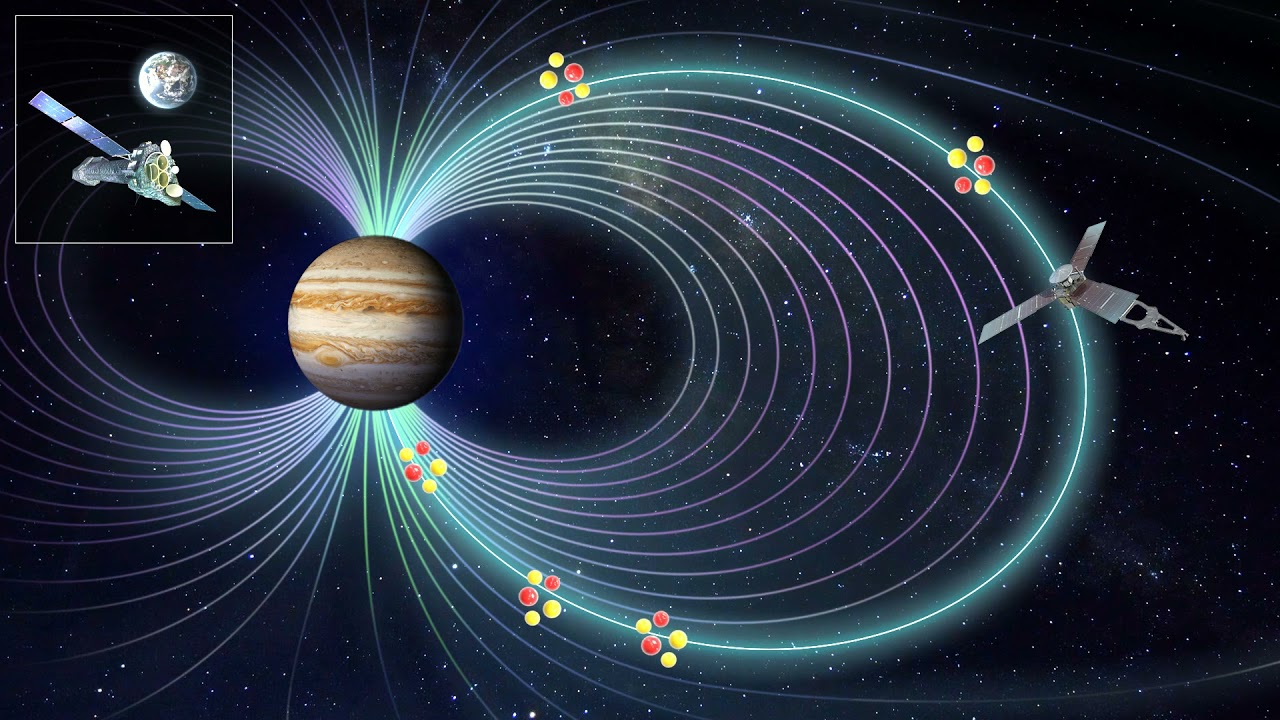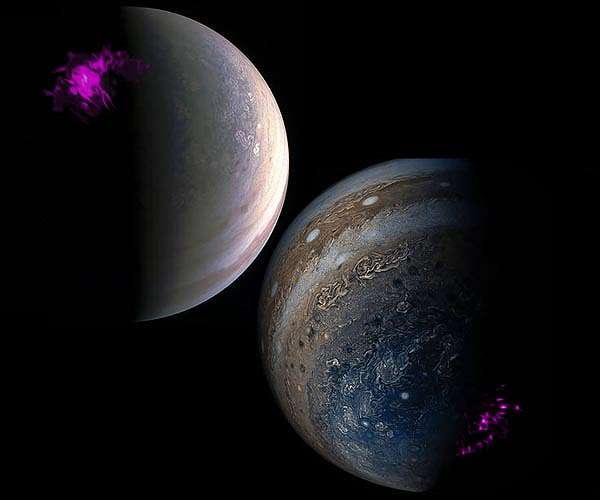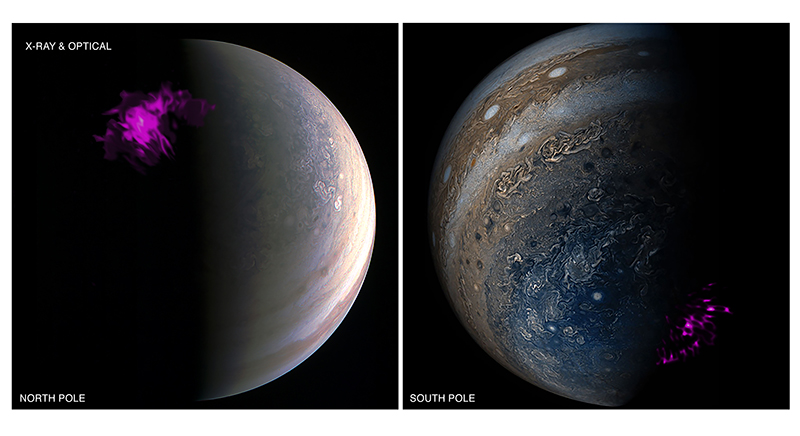Press Release
Johns Hopkins APL Scientists Help Solve the 40 Year Mystery of Jupiter’s X-ray Aurora
Scientists from the Johns Hopkins Applied Physics Laboratory (APL) have helped solve a decades-old mystery as to how Jupiter produces a spectacular burst of X-rays every few minutes.
The X-rays are part of Jupiter’s aurora — bursts of visible and invisible light that occur when charged particles interact with the planet’s atmosphere. A similar phenomenon occurs on Earth, creating the northern lights, but Jupiter’s is much more powerful, releasing hundreds of gigawatts of energy, enough to briefly power all of human civilization. Jupiter’s X-ray aurora alone releases about a gigawatt, equivalent to what one power station might produce over a period of days.
In a new study, published in Science Advances, researchers combined close-up observations of Jupiter’s environment by NASA’s Jupiter-orbiting satellite Juno with simultaneous X-ray measurements from the European Space Agency’s (ESA) XMM-Newton observatory, which orbits Earth.
The research team, led by University College London and the Chinese Academy of Sciences, discovered that X-ray flares were triggered by periodic vibrations of Jupiter’s magnetic field lines. These vibrations create waves of plasma (ionized gas) that send heavy ion particles “surfing” along magnetic field lines until they smash into the planet’s atmosphere, releasing energy in the form of X-rays.
Critical measurements of the local environment came from APL’s Jupiter Energetic particle Detector Instrument (JEDI) onboard Juno. Led by APL space physicist Barry Mauk, JEDI was built to measure the energetic ions and electrons that fill Jupiter’s system. Scientists compared JEDI measurements of the energetic ions and pulsations in the local plasma wave environment to pulsating X-ray emissions observed from XMM-Newton. There was a clear link between the energetic ions and emissions — leading researchers to the discovery that these were indeed the ions precipitating into Jupiter’s atmosphere creating the X-rays, and addressing an important 40-year mystery.
“Jovian X-ray auroras have been studied for decades with remote Earth-orbiting X-ray observatories such as XMM-Newton, but their origins have remained enigmatic,” said George Clark, a space physicist at APL and a co-author of the study. “We know that Jupiter is the solar system’s greatest particle accelerator, so it had been thought that some of the accelerated particles from Jupiter’s vast space environment find their way into its upper atmosphere and collide with neutral material to generate X-rays. But it has never been proven until now.”


